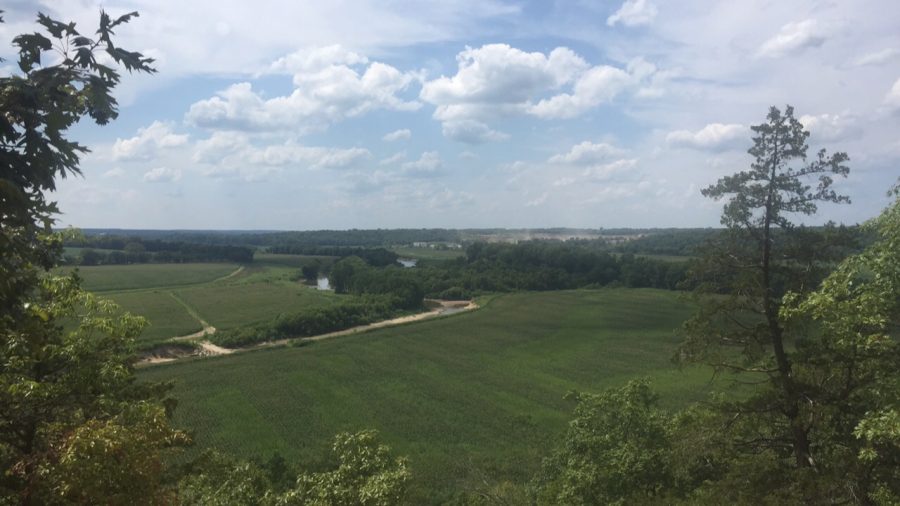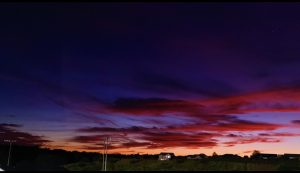Fact from Fiction: Climate Change
Global warming. Melting of the polar ice caps. Rising sea levels. All big problems that fall under the widely-known umbrella term of climate change.

SIdney Kiersch
Overlook of Big Sugar Creek in Cuivre River State Park in Troy, Missouri on Aug. 9, 2017.
But what is climate change? It can mean many different things. It is vastly known for its effects on our planet, or the debate of whether it actually exists. This ongoing argument has spurred many rumors about it over the years, so here voices will be heard over what people think about climate change.
West Side Story Staffer Nick Pryor ‘18 shared his thoughts over this debate, as he made an educational video concerning climate change this past school year.
“I’ve always loved spending as much time as possible outdoors,” Pryor said. “With the Obama Administration ignoring a lot of the protests at the DAPL pipeline and the Trump Administration rolling back a lot of environmental protections I felt like it was something to try and educate people at West about who maybe haven’t followed those things as closely.”
“[Climate change] is something that I hope the President would take another look at,” he said. “I don’t think it’s an issue we as a planet can afford to ignore much longer.”
And he’s not alone. 97% of scientists agree that it is very likely human activity has been the cause of the warming trend in the past century. It all began in the 19th century during the Industrial Revolution where the heat-trapping nature of carbon dioxide (CO2) was introduced. Since then the past 16 years have been the hottest years on record, with 2016 holding the title of hottest year yet.
“The longer we wait, the more extreme the policy action it will take to correct it,” Pryor said. “And that’ll only make it harder to get everyone to agree.”
But global temperature isn’t the only thing that’s rising. In the last century, global sea levels have risen 8 inches with the rate of rise nearly doubling in the past two decades. More recently there are other issues we have to worry about here at home.
“For people in the U.S. I think the more intense and frequent storms are going to be one of the biggest issues.” said Pryor. “We just came out of one of the worst hurricane seasons in recent memory.”
Hurricanes Harvey and Irma both caused immense damage to their respective effected areas. It’s estimated that both of these hurricanes will set the economy back up to $200 billion dollars, displacing thousands of people from their homes.
But there’s yet another major threat to the U.S. enhanced by climate change: wildfires. Although wildfire season has almost come to a close, it’s estimated that 2 million acres of land total were burned this year. In the 2017 California wildfires a series of 8,442 fires burned 1,087,639 acres of land alone.
But how does this have anything to do with climate change? The increase in temperatures into the 21st century has caused both the hurricane and wildfire seasons to become longer, therefore making a bigger window of time for these disasters to cause more destruction every year.
The rise in ocean temperatures is like adding fuel to a fire when it comes to hurricanes, increasing the intensity and frequency of these storms as well as a 30% increase in acidity. This explains why there were simultaneously three different category 5 hurricanes in the Atlantic.
As for wildfires, the effects of global warming to temperature, precipitation levels, and soil moisture has turned the nation’s forests into kindling that goes as far as the eye can see.
So now that we know the facts, what now? The answer is up to you.









